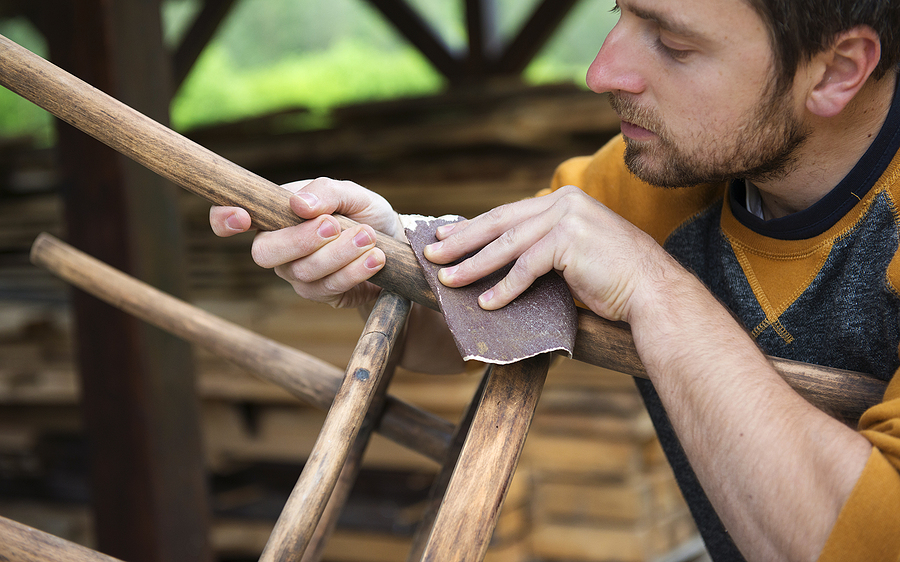Posted by Sandpaper America on Mar 15th 2024
10 Common Mistakes to Avoid When Using Sandpaper
When it comes to DIY projects or home improvement tasks, sandpaper is a staple tool that most people will reach for. Whether you're refinishing furniture, smoothing out rough edges, or preparing surfaces for painting or staining, sandpaper is an essential tool to have on hand.
However, despite its seemingly straightforward usage, there are common mistakes that people make when using sandpaper that can lead to less than desirable results. In this blog post, we will discuss 10 common mistakes to avoid when using sandpaper and how you can achieve better outcomes with your sanding projects. So, before you pick up that sheet of sandpaper for your next project, read on to ensure that you are using it correctly and effectively.

Top Ten Sandpaper Mistakes to Avoid
1. Not Using the Right Grit
One of the most common mistakes people make when it comes to sandpaper is not using the right grit for the job. The grit number on sandpaper corresponds to its coarseness or fineness, with lower numbers indicating a coarser grit and higher numbers representing a finer grit. It's important to choose the right grit for your project as using too coarse of a grit can damage the surface, and using too fine of a grit will result in ineffective sanding.
2. Skipping Grits
Another mistake people make is skipping grits when sanding. Some may think that starting with a coarse grit and then moving to a finer grit will save time, but in reality, this approach can actually end up taking more time and result in an uneven finish. Each grit serves a purpose in the sanding process, with coarser grits removing scratches or imperfections and finer grits smoothing out the surface. Skipping grits can cause unevenness and require more work to achieve a smooth finish.
3. Not Sanding With the Grain
Sanding against the grain is another common mistake that people make. Sanding with the grain means sanding in the same direction as the wood grain or surface texture. Sanding against the grain can cause scratches and unevenness, making it more difficult to achieve a smooth finish.
4. Not Preparing the Surface
Before sanding, it's essential to prepare the surface properly. This includes cleaning off any dust or debris, filling in any cracks or holes, and ensuring the surface is dry. Failure to prepare the surface can result in a less than desirable finish.
5. Using Too Much Pressure
It may seem counterintuitive, but using too much pressure when sanding can actually do more harm than good. Excessive pressure can cause unevenness and potentially damage the surface. Instead, let the sandpaper do the work and use a light touch.
6. Not Changing Sandpaper Often Enough
As you sand, the grit of the sandpaper can wear down, making it less effective. It's essential to change out your sandpaper frequently, especially when working on larger projects, to ensure that you are getting the best results.
7. Neglecting to Sand Between Coats
When working on projects that require multiple coats of paint or stain, it's important to sand between each coat. This helps to smooth out any imperfections and creates a better surface for the next layer of product to adhere to.
8. Not Using a Sanding Block
Using just your hand when sanding can result in an uneven finish, as your hand is not a flat and consistent surface. Using a sanding block, whether store-bought or homemade, can help to evenly distribute pressure and result in a smoother finish.
9. Forgetting to Wear Protective Gear
Sanding creates a lot of dust, which can be harmful if inhaled. It's important to wear protective gear such as a mask and safety glasses when sanding to avoid any potential health hazards.
10. Not Properly Cleaning Up
After sanding, it's important to properly clean up any dust or debris that may have accumulated. Failure to do so can result in a messy work area and potentially contaminate your finished project.
Conclusion
While using sandpaper may seem like a simple task, there are common mistakes that can lead to less than satisfactory results. By avoiding these 10 mistakes and following proper sanding techniques, you can achieve better outcomes with your projects and make the most out of this essential DIY tool. So next time you reach for the sandpaper, remember these tips and ensure a smooth finish every time.
Looking for quality sandpaper products? Look no further than Sandpaper America! Contact Sandpaper America at 1-800-860-7263 (SAND) to order online or over the phone today! We supply custom sandpaper orders and supplies to businesses and consumers alike.
Related Posts:
The
Essential Guide to Choosing and Using Sandpaper
Common
Questions Answered About Sanding Belts and Their Usage
The
Common Kinds of Sanding Paper

